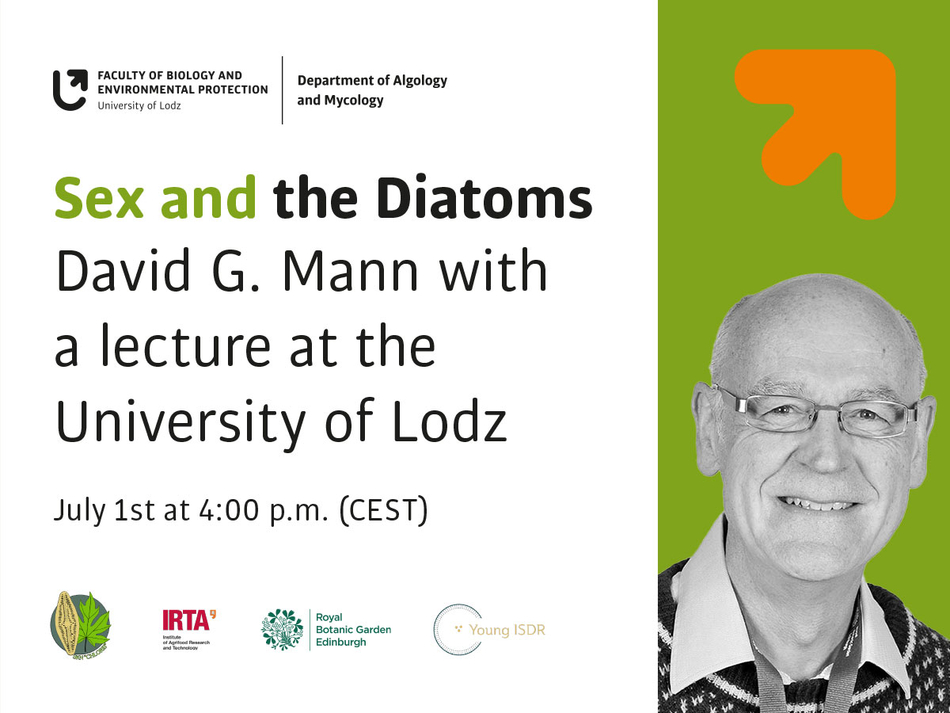
Sexual reproduction of diatoms was discovered in 1847, and the basic features of the life cycle (reduction in size reversed by the expansion of a special cell, the auxospore) were established about 20 years later. However, few people have ever seen auxospory, and the entire life cycle is known for very few species.
Professor David G. Mann is the author and co-author of over 180 publications, including the world-famous monograph "The Diatoms".
He began his PhD in diatom taxonomy (Bacillariaceae) in Bristol, UK, over 50 years ago, with the late Professor Frank Round, using the “new” technology (SEM). He moved to the University of Edinburgh in 1978, and then to the Royal Botanic Gardens, Edinburgh, in 1990, where he spent six years as Deputy Director. His interest in the sexual exploits of diatoms was sparked by the accidental discovery of Rhoicosphenia auxospores in natural samples, and then by induced sexuality in semi-natural populations and cultures (with Victor Chepurnov).
The lecture will be given in English via MS Teams.
Anyone can participate; however, registration is required: https://forms.office.com/e/7ER6Bq3wT7
The lecture is organised by the Algological and Botanical Student Scientific Association Chloris (Faculty of Biology and Environmental Protection, Department of Algology and Mycology) and the Young International Society for Diatom Research
Source: Dr Rafał Olszyński, Department of Algology and Mycology, Faculty of Biology and Environmental Protection, University of Lodz
Edit: Kamila Knol-Michałowska, Promotion Centre, Faculty of Biology and Environmental Protection, University of Lodz
